Croatia Pan Europe Trains Will Run 160 Kilometres Per Hour By 2030
November 2, 2020 – From southern Spain to Budapest through Rijeka and Zagreb and from Salzburg through Zagreb, Belgrade and Skopje to Greece, Croatia pan Europe trains will run 160 kilometres per hour by 2030
In the biggest investment ever made in the infrastructure of the country's rail network, Croatia pan Europe trains will run 160 kilometres Per Hour By 2030. In an investment costing 4.5 billion Euros, 750 kilometres of railways will be modernised.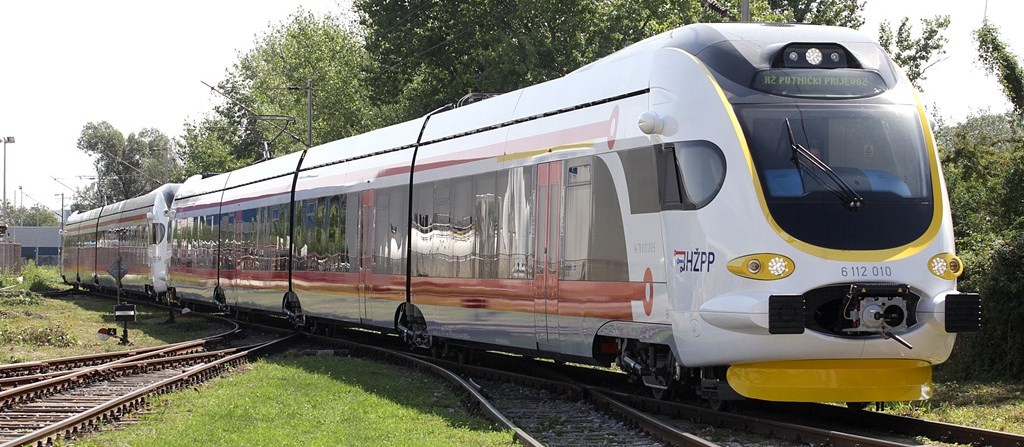 © HZPP
© HZPP
The lines that will receive the upgrade will connect Rijeka to Budapest in Hungary via Zagreb (RH2) and Zagreb to Belgrade via Vinkovci (RH1). Though these lines already exist, they have never undergone an overhaul of the scale proposed. The modernisation with ensure double lanes across the whole of both routes and facilitate passenger train speeds of 160 kilometres per hour.
The level of investment means that during the next ten years, HŽ Infrastruktura's (Croatian Railway Infrastructure Company) rebuild of the Croatia pan Europe trains network will be the largest infrastructure project in the Republic of Croatia and the largest beneficiary of EU grants in the transport sector. Most of the money for the modernisation is coming from European Union grants. Almeria on the Mediterranean, in Andalusia, southern Spain, where the Mediterranean Corridor begins © ddz photo
Almeria on the Mediterranean, in Andalusia, southern Spain, where the Mediterranean Corridor begins © ddz photo
The RH2 line is part of the Mediterranean Corridor which connects the south of the Iberian peninsula with eastern Hungary via six countries. The line runs from Almeria on the Mediterranean coast in the south-east of Spain, through Madrid and Barcelona. It passes through Marseille in France, then northern Italy, Slovenia, Croatia, the Hungarian capital of Budapest, before finishing in Záhony in the east of Hungary, not far from the border with Ukraine. The route covers more than 6000 kilometres. The Croatian section will pass through Jurdani (six kilometres north of Opatija), Rijeka, Karlovac, Zagreb, Dugo Selo, Križevci and Koprivnica.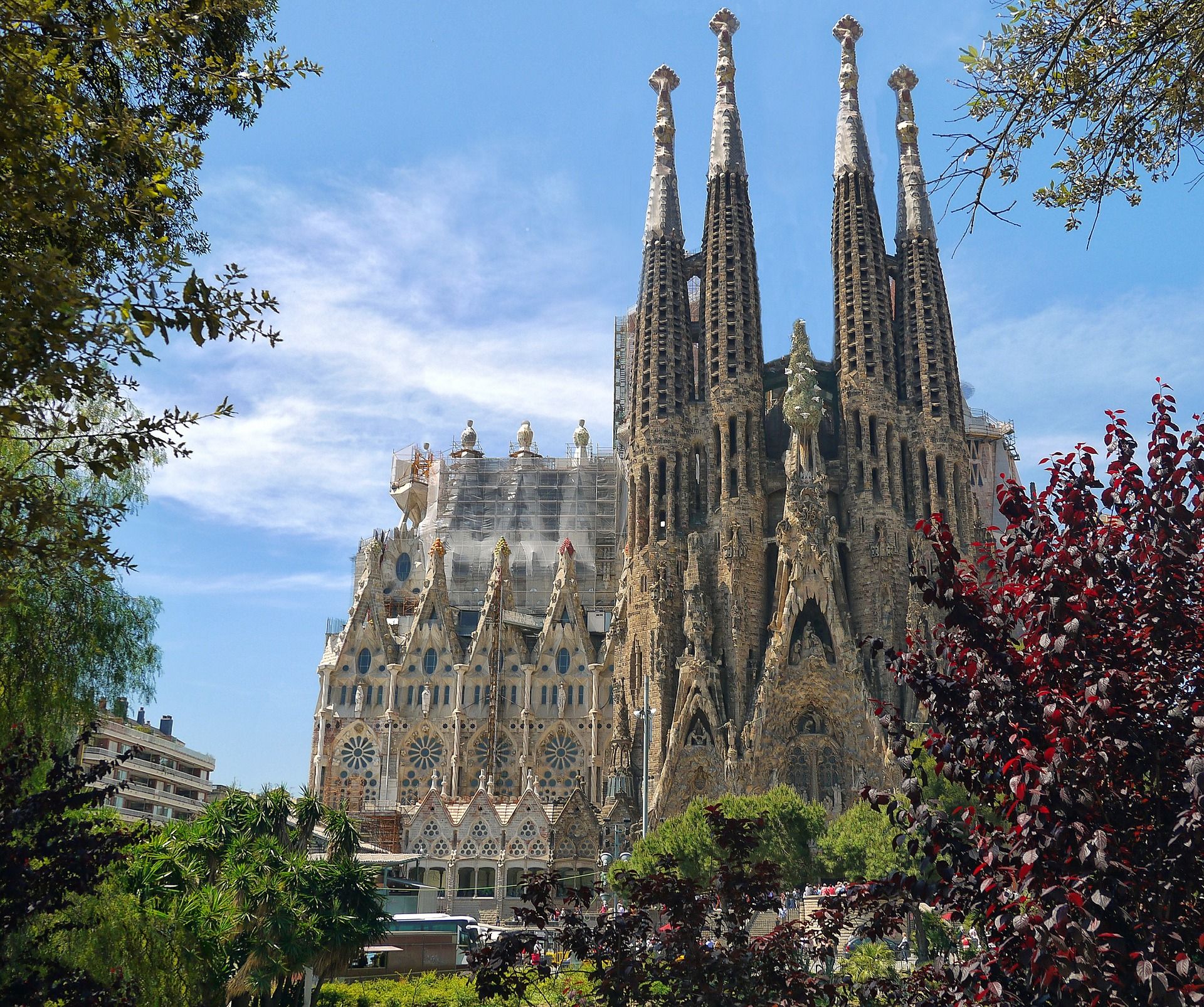 To Croatian rail passengers, the Spanish city of Barcelona will be just a few hours away by 2030 © Patrice Audet
To Croatian rail passengers, the Spanish city of Barcelona will be just a few hours away by 2030 © Patrice Audet
The RH1 line is part of the Pan-European Corridor X. The Croatia pan Europe trains section of this transport route was once one of the three lines taken by the Orient Express. The modernised rail line will start in Salzburg, Austria and pass through Ljubljana before reaching Zagreb. The line will pass through Slavonski Brod and Vinkovci before making its way to Belgrade, then Niš in southern Serbia. The old Oriental Express line then headed east, to Istanbul via Sofia, Bulgaria. The EU-funded train section of the Pan-European Corridor X instead heads south, to Thessaloniki in Greece via Skopje in Macedonia.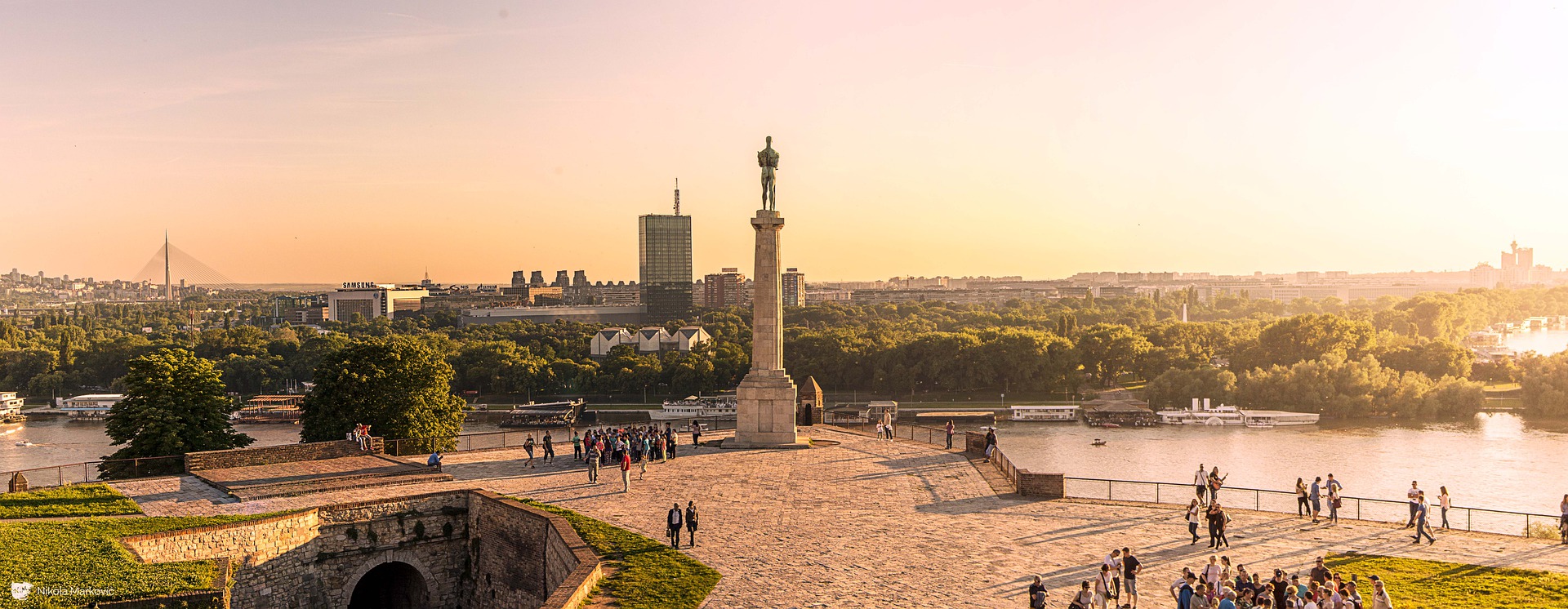 The rail journey time between Zagreb and Belgrade (pictured) will be shortened considerably by the improvements © Djordje Jovanovic
The rail journey time between Zagreb and Belgrade (pictured) will be shortened considerably by the improvements © Djordje Jovanovic
Trains are currently the greenest transport option for long-distance travel. As the world heads in the direction of seeking energy sources that do not rely on finite fossil fuels, rail also currently looks to be the long-distance travel option best-equipped to meet this challenge. In the future, visitors from all across Europe may increasingly rely on the Croatia pan European trains network in order to access the country. The improvements also increase business and leisure opportunities for Croatians in Europe. Thessaloniki in Greece is one of the most popular cities in Europe for visitors. The renewed rail section of the Pan European Corridor X will end here © Dimitris Vetsikas
Thessaloniki in Greece is one of the most popular cities in Europe for visitors. The renewed rail section of the Pan European Corridor X will end here © Dimitris Vetsikas
Around 935 million Euros was invested in the Croatian railway infrastructure between 2010 and 2019. The new investment dwarfs those figures. The initial investment, occurring between 2020 and 2024 amounts to as much as 1.8 billion Euros, of which almost 78.7 per cent is co-financed by the European Structural and Investment Funds (ESI) and the Connecting Europe Facility (CEF). From 2025 to 2030, EU funds totalling more than 2.7 billion Euros are expected to be invested in the Croatia pan European trains network.
Freight train passage along the lines will also be increased, reaching a new speed of 120 kilometres per hour. The Croatia pan European trains network also offers great potential to open up continental Croatia regions to international visitors. The Croatian railway network currently has 2,617 kilometres of track, of which 274 kilometres are double-track and 980 are electrified.
For the latest travel info, bookmark our main travel info article, which is updated daily.
Read the Croatian Travel Update in your language - now available in 24 languages
Continental Croatia Trains: Inland Opens Up With Green Travel
October 3, 2020 - With charter airlines in a state of flux and Croatia Railways beginning a renewal of their fleet in Slavonia, are continental Croatia trains the eco-friendly and best way to unlock the inland's amazing potential?
Everything changes. Nothing stays the same. Even before 2020 arrived, lifestyles and trends were headed in new directions. Eco-tourism and agro-tourism were two of the fastest-growing areas within the travel sector, this behaviour change a response to concerns about the environment. And nowhere in the country stands better poised to take advantage of this interest than continental Croatia.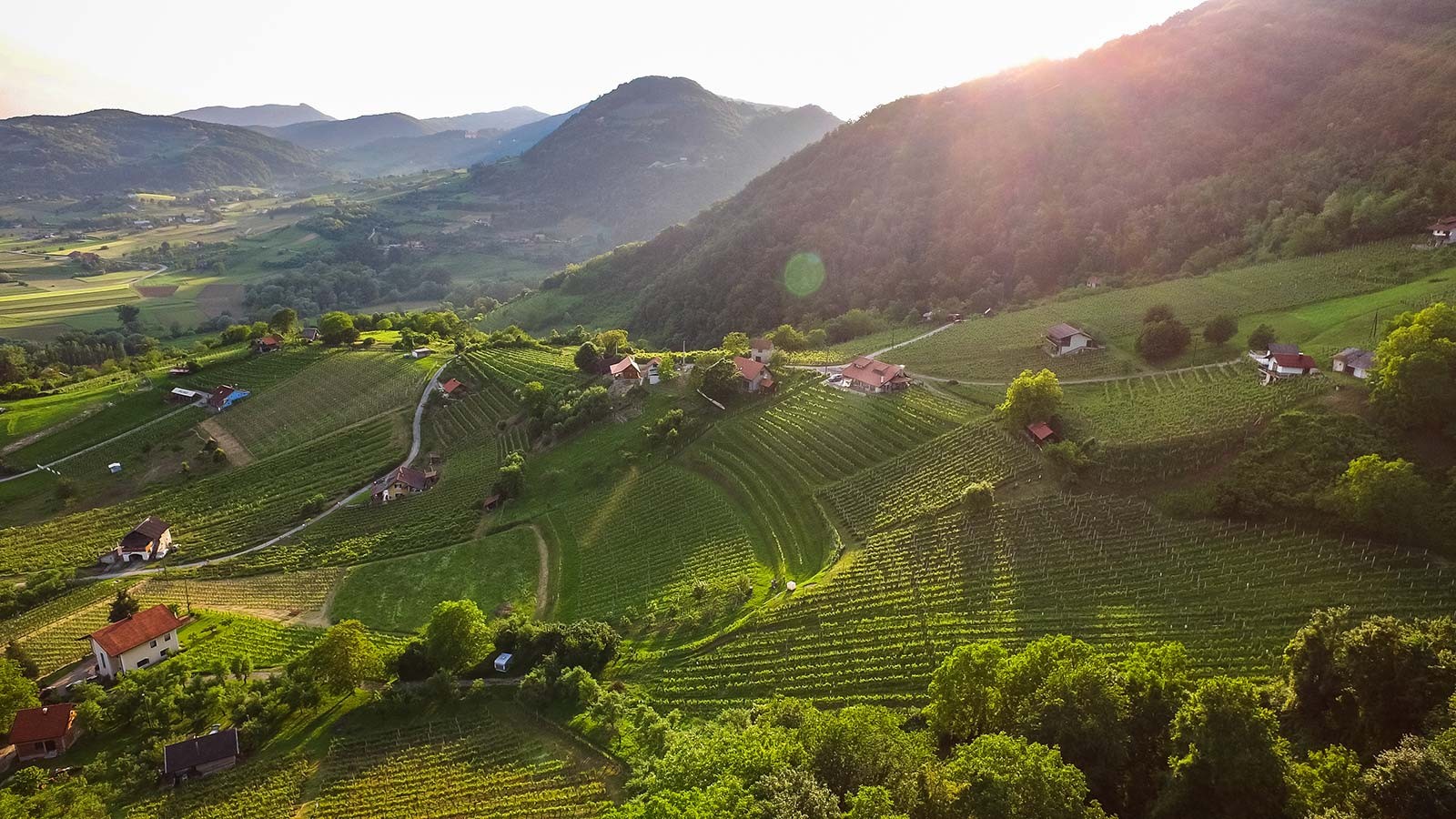 Impossibly pretty Zagorje - the region lies just north of Zagreb and is accessible by continental Croatia trains © Ivo Biocina / Croatia National Tourist Board
Impossibly pretty Zagorje - the region lies just north of Zagreb and is accessible by continental Croatia trains © Ivo Biocina / Croatia National Tourist Board
From the impossibly pretty hills of Zagorje, the peaceful rivers of Karlovac county and the hidden vineyards that surround the capital Zagreb to the vast Pannonian flatlands that stretch to Slavonia, Baranya, Vukovar-Srijem and beyond, the varied topography of continental Croatia is wild, exciting and - by many - wholly undiscovered.
This is land where agriculture and nature thrive side by side, where the stresses of modern-day existence ebb away as you readjust to a way of life that would look mostly familiar to the people who lived here centuries ago. These are places where you can truly be at one with yourself and with your surroundings. In continental Croatia, you often find yourself in an environment that is both timeless and traditional, yet wholly contemporary in regards to its ecological aspirations. And you're never far away from an exciting city environment that you can dip into on a whim – not just Zagreb, but Osijek, Slavonski Brod, Karlovac, Sisak and Varaždin too.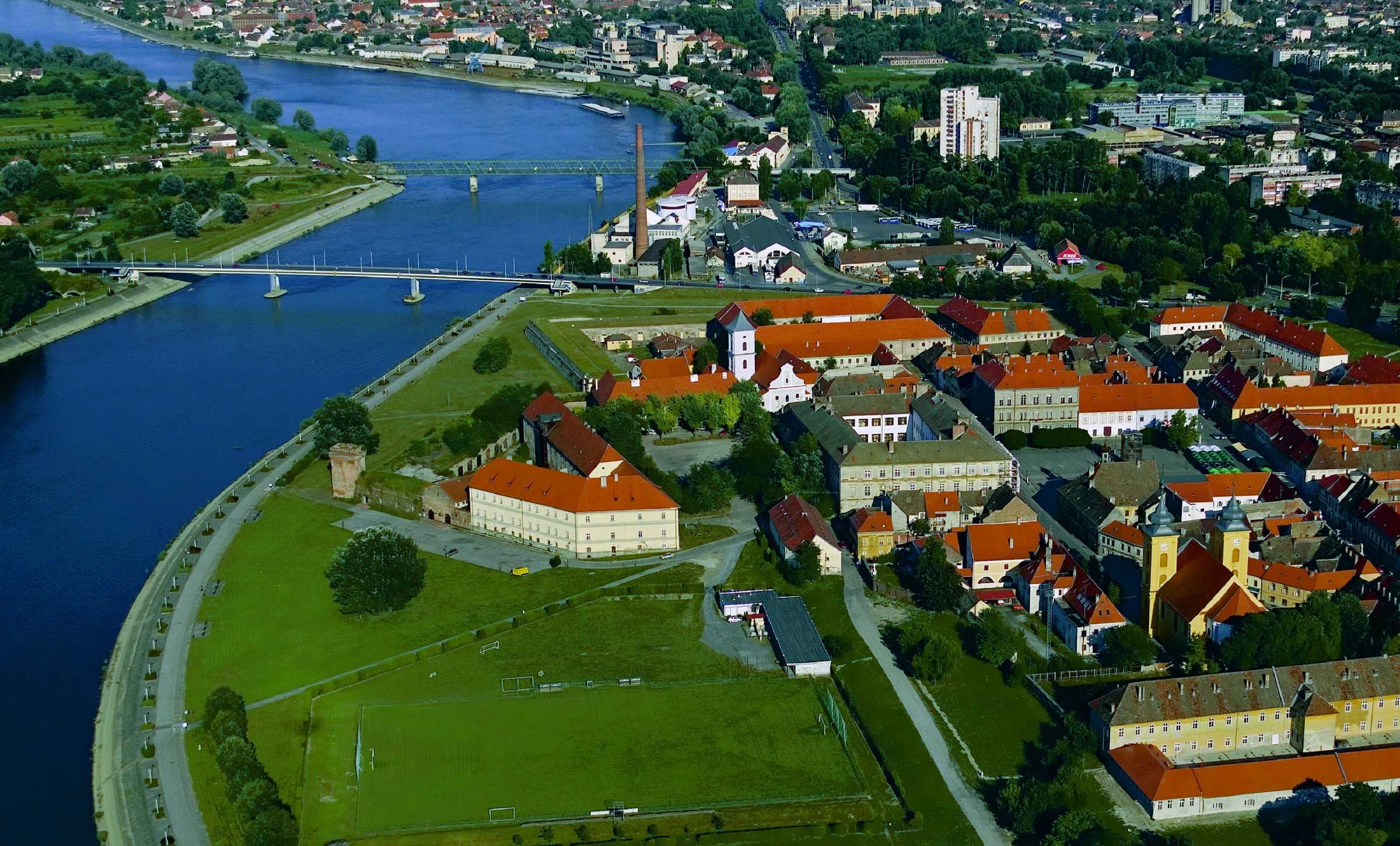 To those who really know and love Croatia, Osijek is simply unmissable. It is both the capital of and the doorway to Slavonia and Baranya and should be more accessible by continental Croatia trains. Sadly, international transportation links to the city by air are also quite poor. Improvements in accessibility to Slavonia and Baranya by rail and road are imminent © Romulić & Stojčić
To those who really know and love Croatia, Osijek is simply unmissable. It is both the capital of and the doorway to Slavonia and Baranya and should be more accessible by continental Croatia trains. Sadly, international transportation links to the city by air are also quite poor. Improvements in accessibility to Slavonia and Baranya by rail and road are imminent © Romulić & Stojčić
Unlocking the incredible potential of continental Croatia relies on getting the message out there and facilitating travel to these regions
In recent TCN features we have detailed that motorways within Croatia are among the best in Europe - once you're inside Croatia, travelling by car (or bus) between the regions couldn't be easier. We have also seen evidence of the huge interest in travelling here by rail and using continental Croatia trains.
Of all the modern methods of long-distance travel, rail is by far the most eco-friendly. What better way to begin an environmentally friendly holiday than by arriving on continental Croatia trains? When the country wisely decided to prioritise its internal motorway system, a modern and fast inter-regional rail network was put on the back burner. Nowhere suffers greater from this decision than continental Croatia.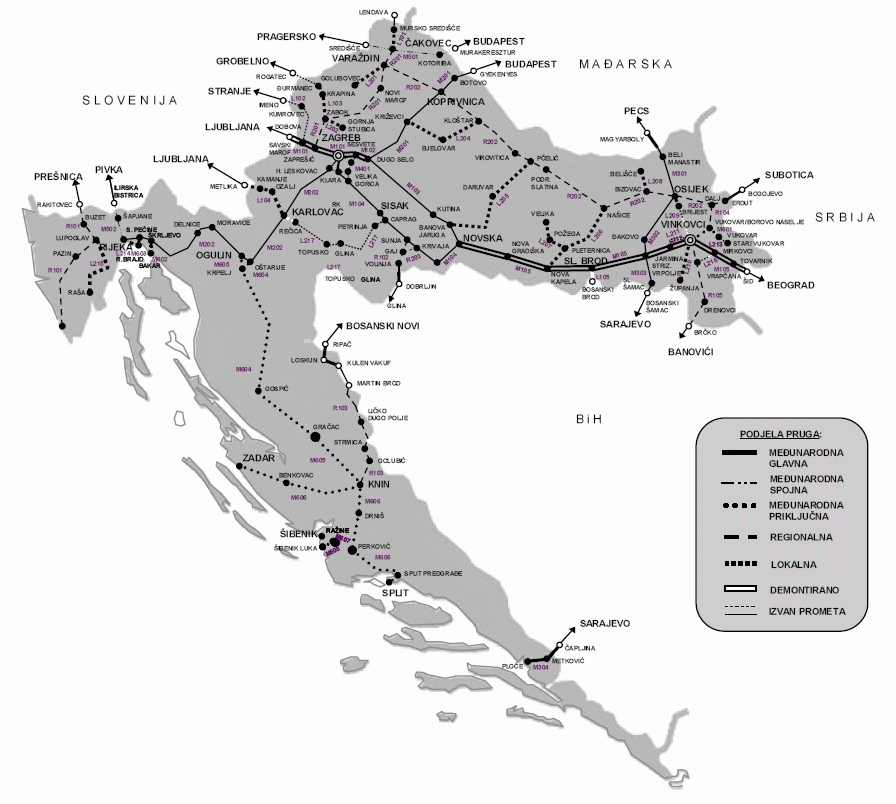 The Croatian rail network © Croatian Official Document uploaded to Wikipedia by Epepe
The Croatian rail network © Croatian Official Document uploaded to Wikipedia by Epepe
The only high-speed line that currently exists in Croatia links Rijeka to Budapest, via Zagreb and Koprivnica. Planned improvements hope to cut journey times between Zagreb and its nearest coastal city to an hour. Same as it ever was - Rijeka was the first Croatian city to be connected internationally by rail. That line also ran into the heart of Austro-Hungary and facilitated upper-class travel to places like Opatija. But does it best benefit the country to invest in more links to the coast or in continental Croatia trains? Well, the inland is not being ignored. Upgrades are being made to continental Croatia trains. This impressive beast actually services the country's coast. But would more investment in the continental Croatia trains network better service more people and help unlock the inland to tourists? Around 70% of the country's inhabitants live in continental Croatia © HŽPP
This impressive beast actually services the country's coast. But would more investment in the continental Croatia trains network better service more people and help unlock the inland to tourists? Around 70% of the country's inhabitants live in continental Croatia © HŽPP
The rail link between Zagreb and Slavonski Brod is so historic that it was once part of the four routes of the Orient Express. It has been maintained to a standard where you can make a relatively quick journey from the capital to Vinkovci via Slavonski Brod. The same cannot be said for rail travel to Osijek, the access point to Baranya and much more. So slow is the connection between Osijek and Zagreb that it has been possible over recent times to reach the Slavonian capital quicker by taking the train to Vinkovci, then the bus to Osijek, rather than travelling direct by rail. Osijek train station. A renovation to the building is planned for the near future © Romulić & Stojčić
Osijek train station. A renovation to the building is planned for the near future © Romulić & Stojčić
However, in February this year, Croatian Railways introduced four direct daily lines between Slavonski Brod and Osijek. And there will be a new tilting train line that will run between Zagreb to Osijek on Friday afternoon and from Osijek to Zagreb on Sunday afternoon, facilitating student travel. On October 15, the first low-floor train will run between Osijek and Vinkovci as an additional part of the renewal of their continental Croatia trains fleet in Slavonia. The welcome return of Croatia's second-oldest international rail line - linking Osijek to Pécs in Hungary, via Beli Manastir and Baranya - was introduced in late 2018.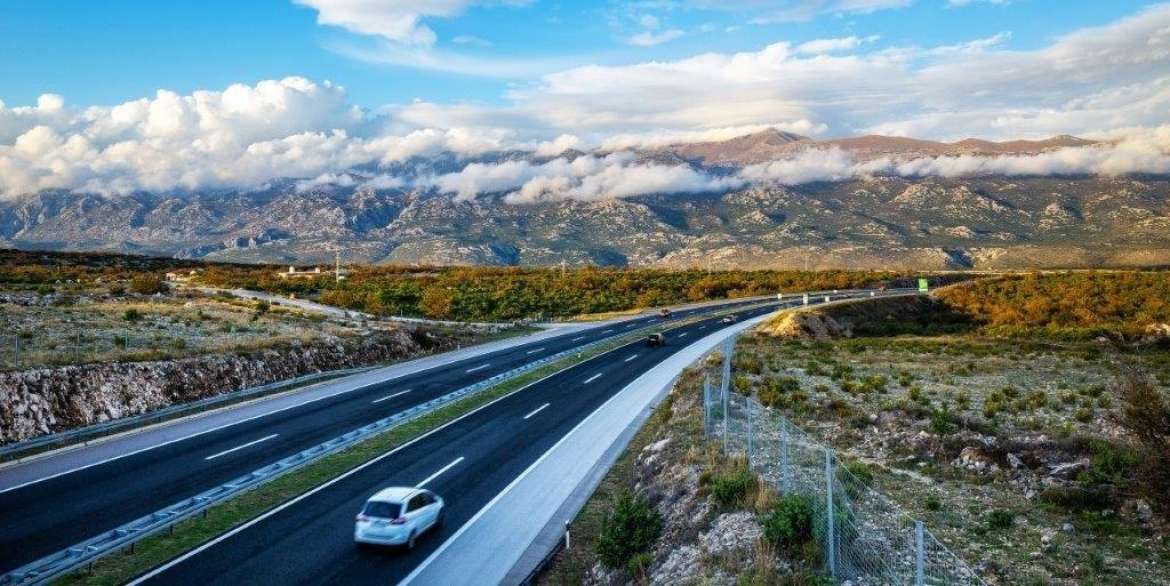 A motorway stretch between Metković and Dubrovnik, integrating the Pelješac bridge and the Croatian segment of the European corridor are the final big remaining projects in a three-decade-long undertaking to give Croatia one of the best motorway networks in Europe. Should Croatia's rail network be next? © Hrvatske Autoceste
A motorway stretch between Metković and Dubrovnik, integrating the Pelješac bridge and the Croatian segment of the European corridor are the final big remaining projects in a three-decade-long undertaking to give Croatia one of the best motorway networks in Europe. Should Croatia's rail network be next? © Hrvatske Autoceste
Access to Slavonia and Baranya will also be massively facilitated upon completion of the European corridor, which will connect North Europe to the Adriatic. Starting in Budapest, it necessitates the building of a bridge near Beli Manastir. Thereafter the motorway will pass by Osijek, connect to the Zagreb-Slavonia motorway near Lipovac, then pass through Bosnia and its capital Sarajevo and on to Ploče.
The removal of budget airline flights to the airport in Osijek remains a hindrance to attracting many international visitors to Slavonia and Baranya. However, with charter airlines facing the greatest uncertainty of all modes of transport at the current time, though their return is a must, it is perhaps now an ambition that should remain more long term. For the immediate future, improvements to rail travel look to be a brilliant way of opening up not only Slavonia, Baranya and Vukovar-Srijem, but also an eco-friendly access point capable of serving the whole of untapped continental Croatia.
For the latest travel info, bookmark our main travel info article, which is updated daily.
Read the Croatian Travel Update in your language - now available in 24 languages
Lockdown Brings Increase in Rail Freight Transport, Drop in Passenger Transport
ZAGREB, September 18, 2020 - About 67% fewer passengers travelled by rail in the second quarter due to the corona crisis compared to the same period last year while freight transport rose by 2.5% by taking over freight from other transport modes, the HAKOM regulatory agency informed on Friday.
Noting that a decrease in the number of passengers travelling by rail in Q2 was to have been expected because of the lockodown, the Croatian Regulatory Authority for Network Industries - HAKOM on Friday confirmed previous claims by Transport Minister Oleg Butkovic that as far as the cargo segment was concerned, the railway did not generate any loss.
A total of 3.66 million tonnes of goods were transported in Q2 according to HAKOM, which is 2.5% more year on year however it recorded a 'small' decrease (11,000 tonnes) compared to Q1 2020.
Similarly until now, the biggest freight transporter in Q2 was the national HZ Cargo with a share of 56.3% in train kilometres while the remainder of cargo was transported by eight other providers on the market.
Passenger travel reduced due to epidemic
Unlike freight transport, which continued to operate without any major disruptions during the entire time of the lockdown, passenger transport was significantly reduced in Q2 year on year, by almost 67%.
In numbers, that means that 1.7 million passengers travelled by train in Q2 this year compared to 5.1 million in 2019 Q2.
There were fewer passengers compared to Q1 too, when 4.7 million passengers travelled by train in that period.
For the latest travel info, bookmark our main travel info article, which is updated daily.
Read the Croatian Travel Update in your language - now available in 24 languages
Butkovic: 1.5 Billion Euros Invested in Railways
ZAGREB, August 27, 2020 - Maritime Affairs, Transport and Infrastructure Minister Oleg Butkovic visited on Tuesday workers working on the reconstruction of the railway running from the Zagreb West Rail Station to Savski Marof.
Minister Butkovic underscored that the project was a part of a large transport infrastructure investment cycle worth HRK 20 billion (approx. €2.67 bn), with work on the railway accounting for €1.5 billion of that amount.
The reconstruction of the railway is worth HRK 366 million (excluding VAT), most of which is covered by a loan aproved by the World Bank, that is, the International Bank for Resconstruction and Development (IBRD).
The works on the reconstruction began in May.
The contract for the reconstruction works was signed in February this year between the HZ Infrastruktura railway operator and the Austrian Swietelsky company. The deadline for completion is 27 months, which means the railway should be completed in summer 2022.
The railway from Savski Marof to Zagreb West Rail Station, which is about 18 km long, is the most frequented railway in Croatia, with over 160 trains passing along the route every day, and it is a part of the RH1 railway corridor, which is very significant for international freight transport and urban-suburban transport.
The reconstruction should increase the level of safety and the carrying capacity of the rail line, as well as reduce the cost of maintenance, while the trains are expected to be able to travel at 120 km/h.
Large transport investment cycle
During his visit to Savski Marof, Minister Butkovic underscored that together with another large construction site nearby - the reconstruction of the railway from Zapresic to Zabok - an investment of about HRK 900 million was being made in railway reconstruction in that area alone.
Minister Butkovic announced that investments in railway would continue in the coming years, and next week a contract would be signed for the purchase of 22 new trains for the rail transport company HZ Putnicki Prijevoz, a project worth more than a billion kuna.
According to the data he presented, the total transport performance so far this year is at about 50% of last year's results, and rail freight transport, and even passenger transport, he said, have not seen much damage because there was even more demand for that type of transport during the coronavirus crisis.
President of the HZ Infrastruktura railway operator Ivan Krsic underscored that the works on the reconstruction of the railway from Zagreb West Rail Station to Savski Marof were progressing well, noting that the railway was last overhauled in 1974.
For the latest travel info, bookmark our main travel info article, which is updated daily.
Read the Croatian Travel Update in your language - now available in 24 languages
Project for Lowland Railway to Rijeka Starts
ZAGREB, Aug 10, 2020 - The HZ Infrastruktura company is embarking on a project to upgrade the existing and build a second track of the railway running from Hrvatski Leskovac to Karlovac, with the value of the project being the highest of all other Croatian railway projects so far, amounting to HRK 2.3 billion, not including VAT, Vecernji List daily says.
The tender for the project, which will be co-financed by the European Union, which will provide 85% of the funding, will be published in September.
The Hrvatski Leskovac section is part of a railway running from Rijeka to the border with Hungary, and work has already started on upgrading the single-track line to a dual track from Zagreb to the border. Work is already underway on the section Dugo Selo-Krizevci and preparations are underway for work to begin on the section running from Krizevci to the state border.
Work on the Hrvatski Leskovac - Karlovac section will thus also launch work on upgrading the railway from Zagreb to Rijeka to a modern, dual track.
The Rijeka-Zagreb-Budapest railway is part of the Mediterranean TEN-T corridor.
The implementation of this project as well as other sections on which work has been underway or is planned will increase the competitiveness of the port of Rijeka by improving its transport connectivity to central European markets, the daily says.
Transport Minister Oleg Butkovic has said that the entire project could be completed by 2027.
Rijeka-Karlovac Railway Line Heading for Chinese or EU Hands?
As the Chinese show greater interest in various Croatian strategic projects, the EU and the EC become more and more uneasy at the thought of such a heavy Chinese business presence in Croatia. As the EC changes its attitude towards some Croatian projects to which it reacted negatively in the past, has the Chinese influence rendered this change of heart senseless?
As Novac/Kresimir Zabec writes on the 13th of April, 2019, Croatia wants to finance the construction of the railway line from Karlovac to Rijeka, covering a length of 170 kilometres with EU funds, because that's more favourable to Croatia than doing it through a concession, stated Croatian Minister of Transport Oleg Butković at the construction site of Pelješac bridge recently.
Ironically much like Chinese whispers, it began to circulate in the media that everything had already been agreed with the Chinese, and that China's CRBC which is already building Pelješac bridge would construct the railway line via a concession model. Economy Minister Darko Horvat has thus announced giving the Chinese company a fifty year concession. However, Butković has very clearly stated that there has been absolutely no direct agreement with the Chinese and that everything will go through a tender, as usual.
''If we decide on a concession tender, then Chinese companies can also apply. If the line is built using EU funds, Chinese companies will be able to bid to be the contractors for the project,'' said Butković.
EU funding for the project is much more favourable for Croatia because it doesn't affect the growth of public debt. Should the case result in giving a concession to a Chinese company, they would build and finance it, but with government guarantees amounting to 1.7 billion euros, which is something the state can ill afford. According to current projections, the entire line should be completed by 2030.
Of the 270 kilometre of railway line from Botovo on the Croatian-Hungarian border, to Rijeka on the shores of the Northern Adriatic, the section from Karlovac to Rijeka is currently not covered at all by any form of EU co-financing.
A few years ago, the European Commission told the Croatian Government quite clearly that they would not finance that part of the line from Karlovac to Rijeka because it was too expensive and it just doesn't pay off. After that, the Croatian Government turned to the Chinese who were constantly showing interest in constructing that section. Now that the negotiations between China and Croatia have entered a much deeper and more serious phase, signals from Brussels, more specifically the European Commission, have been arriving which indicate that they are, despite all, still interested in the project.
Although that railway line is not officially part of the trans-European transport network, senior officials of the European Commission's Directorate General for Transport have openly told reporters that the Commission is ready to co-finance this project, and that it is a very important part of the European budget planning in the period commencing in 2021. Quite a turnaround, no?
In addition, this railway line is part of the line from Rijeka to the Hungarian border, which the European Commission has invested around 400 million euros into the modernisation and construction of, and that obviously doesn't quite sit well with the idea of the entrance of the Chinese into this project. According to statements, the ultimate goal of the overall project is to build a new bridge to the island of Krk and to build a new port on the island for container transport, which is an idea that the Chinese are also very interested in.
What stage are the works in?
Rijeka - Zagreb
The railway line from Rijeka tp Zagreb to the Hungarian border is part of the international Mediterranean Corridor connecting southern Europe with Central and Eastern Europe. The modernisation of this line would be of great importance to the Port of Rijeka. The modernisation and the construction of these lines are all in different stages of execution.
Botovo - Koprivnica - Križevci
In 2016, the European Commission approved 240 million euro for Croatia to build this section, but the contractor for the job hasn't yet been selected. A tender is in progress, but it has been stopped once again due to an appeal lodged by an Italian company.
Križevci - Dugo Selo
This is the only section of the track where works are ongoing. The European Union has invested about 180 million euros in this project, but works began a year and a half late because of contractor issues.
Hrvatski Leskovac - Karlovac
The design of this part of the line was co-financed by the EU in the amount of about 6 million euros. It is expected that tenders will be announced to modernise the existing works and build another track. The value of the works is estimated at 315 million euros and is planned to be funded through EU funds.
Karlovac - Oštarije
An entirely new two-track railway would be constructed on this part of the track, and the value of the works would be estimated at about 400 million euros. Project documentation has been produced, which has been paid for by the EU in the amount of 9 million euros.
Oštarije - Škrljevo
This, which is considered to be the most challenging part of the line, hasn't yet been fully defined, and technical documentation is being prepared by the EU, for which it has paid nearly 6 million euros. The value of the works on this section is estimated at as much as one billion euros.
Škrljevo - Rijeka - Jurdani
Project documentation was produced by the EU at a cost of 8.5 million euros. The value of the works is estimated at 270 million euros in total.
Make sure to follow our dedicated business and politics pages for more on Chinese-Croatian relations, doing business in Croatia, the investment climate in Croatia, Croatian companies, products and services, government policies and much more.
Click here for the original article by Kresimir Zabec for Novac/Jutarnji


